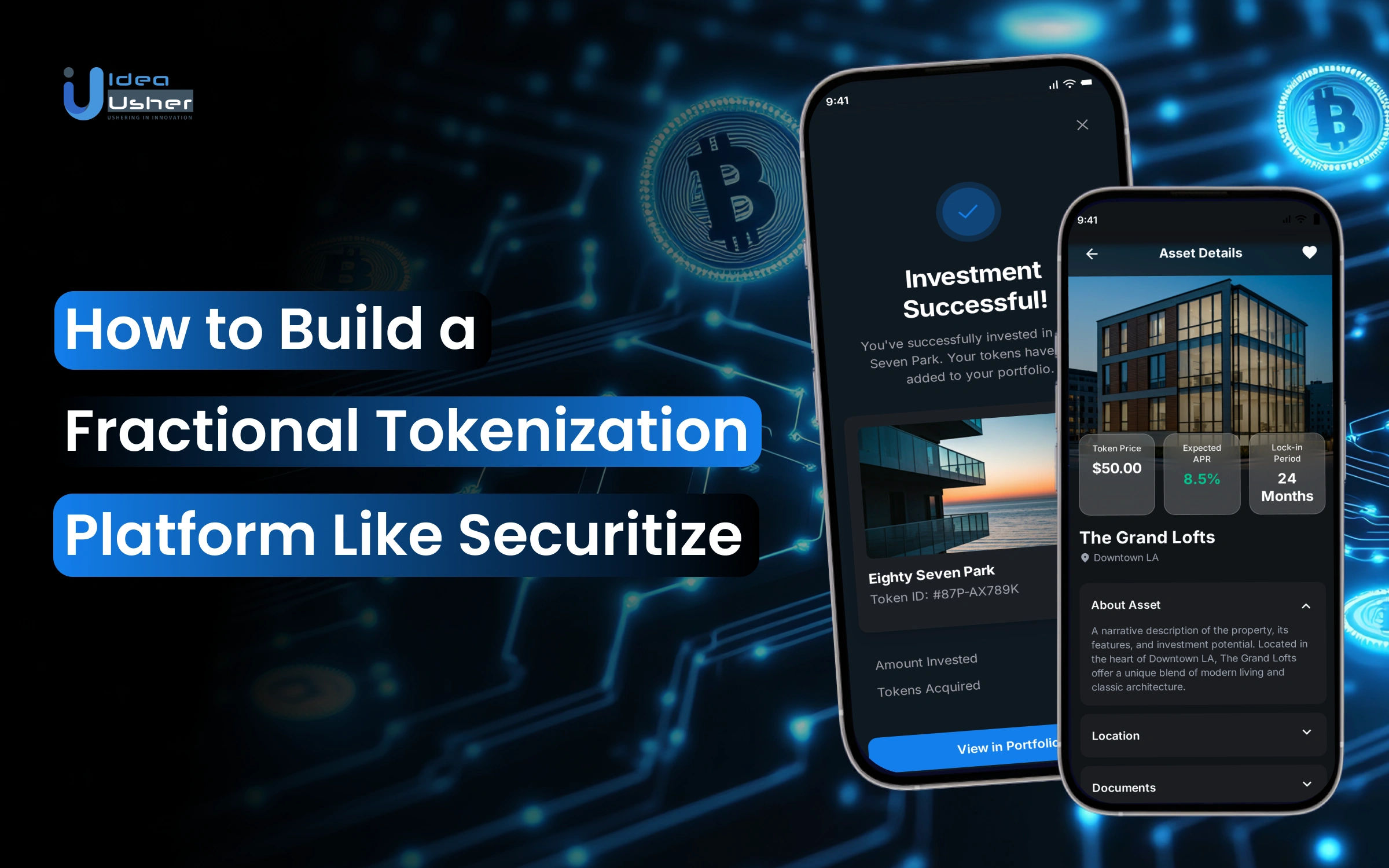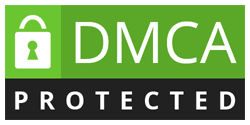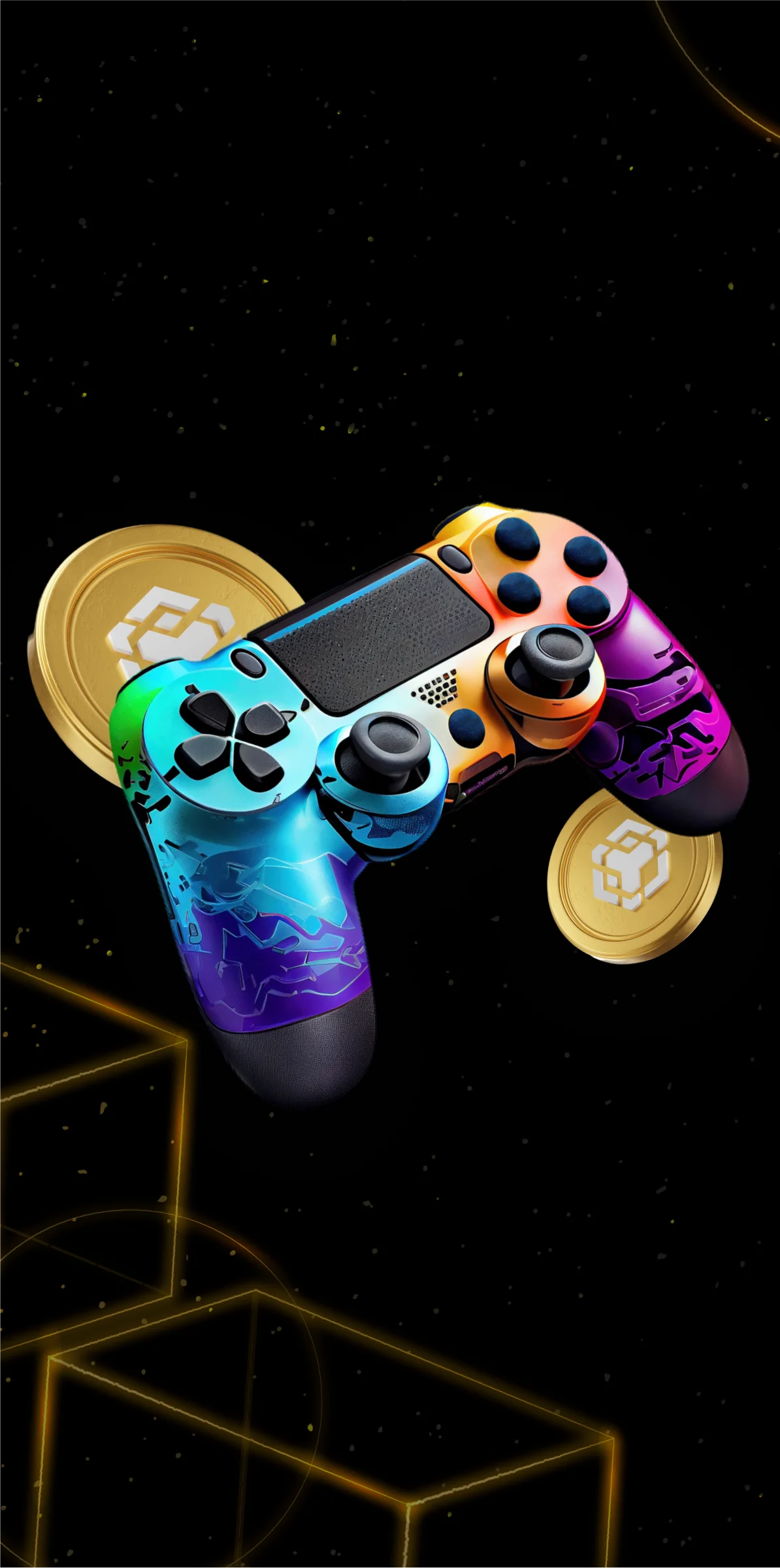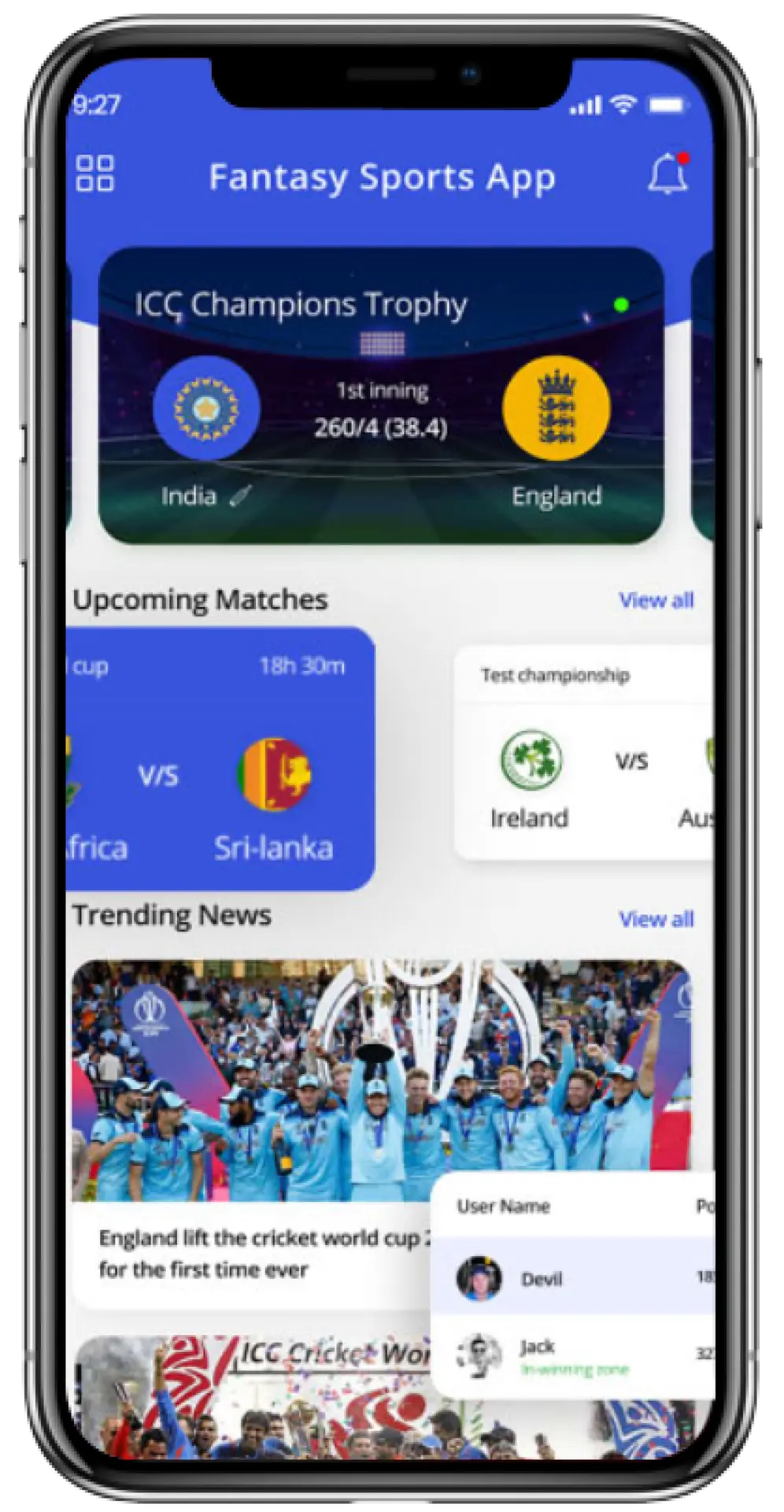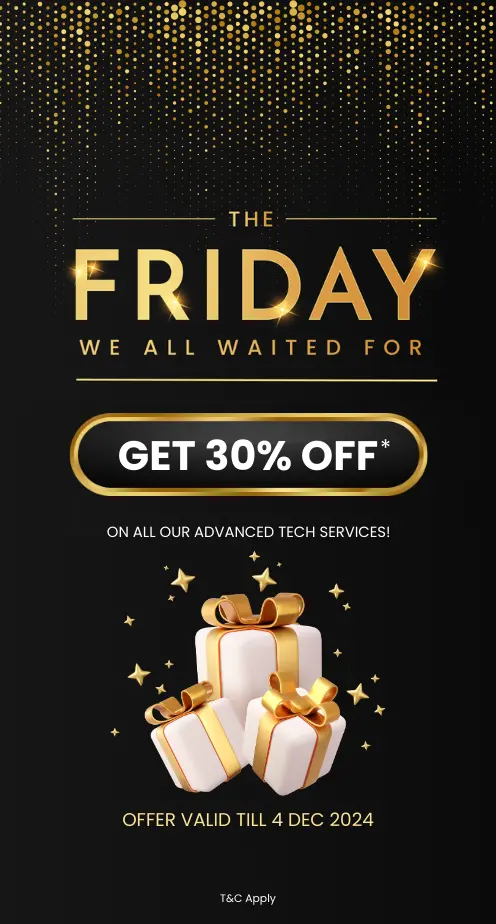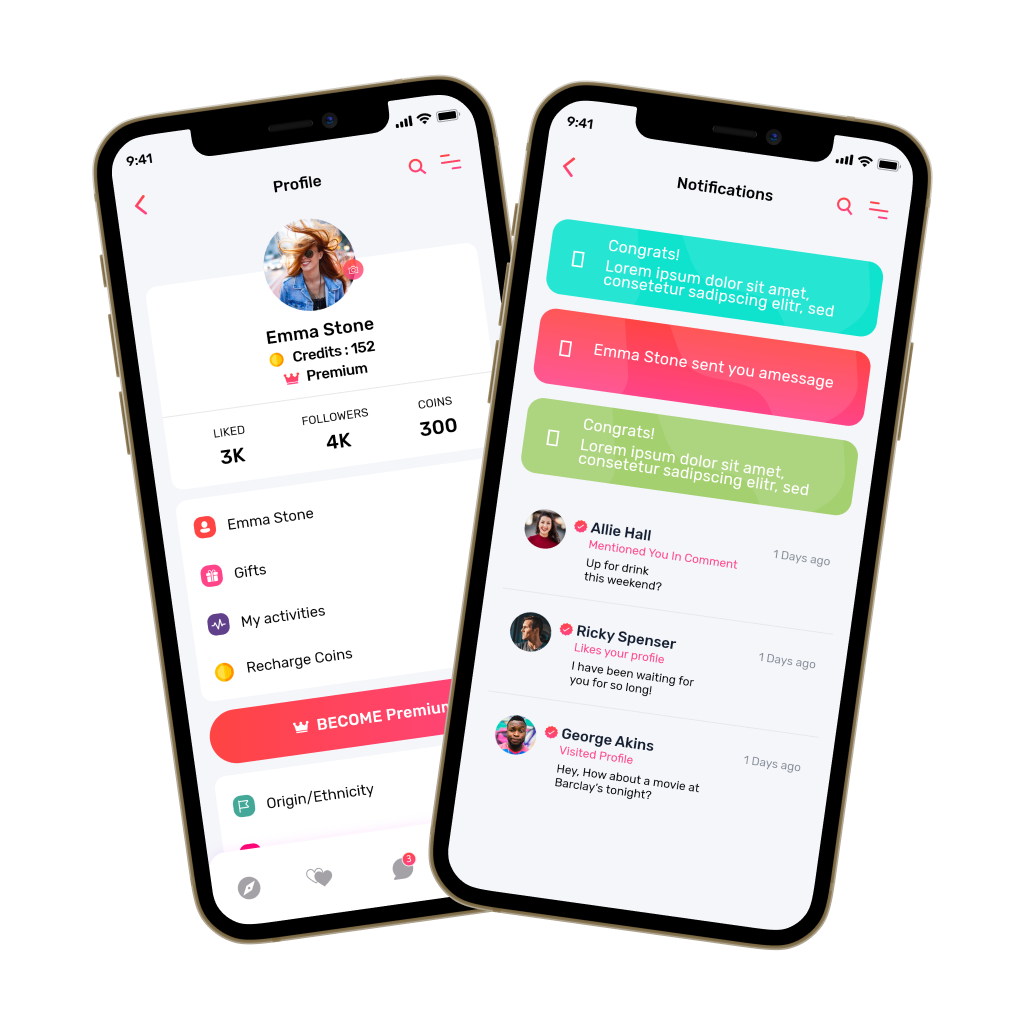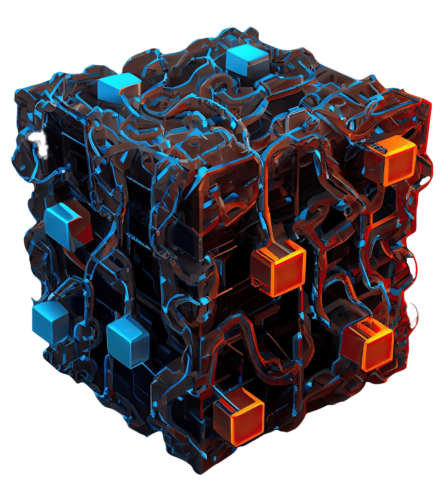Not too long ago, investing in high-value assets like real estate or private equity felt unreachable for most people because the systems around them were slow and highly restricted. That reality is changing as companies begin exploring models where assets can be divided and accessed in smaller digital units.
A fractional tokenization platform may genuinely transform this shift because it can redefine how ownership is created and managed. Modern systems now support automated investor checks and programmable compliance that might remove delays that once seemed unavoidable. They also enable regulated secondary trading that allows ownership to move with far more control and visibility.
Over the past decade, we’ve built a lot of fractional tokenization solutions that use advanced technologies like distributed ledger technology, digital identity, and compliance automation systems. Thanks to these years of expertise, we’re writing this blog to discuss the key steps to develop a fractional tokenization platform like Securitize. Let’s start!
Key Market Takeaways for Fractional Tokenization Platforms
According to MordorIntelligence, the asset tokenization market is expanding at a remarkable pace, moving from USD 2.08 trillion in 2025 toward a projected USD 13.55 trillion by 2030, driven by a 45.46% CAGR. This growth reflects a shift in how investors interact with real-world assets, as fractional ownership lowers barriers and brings liquidity to markets that once required large capital commitments. With clearer regulations and better blockchain infrastructure, tokenized ownership is becoming a practical tool rather than an experimental concept.
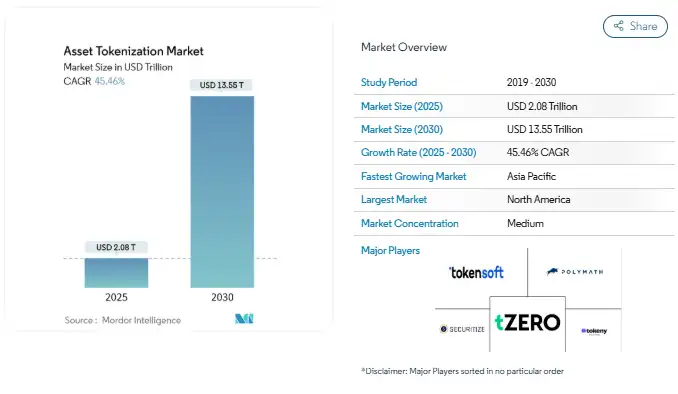
Source: MordorIntelligence
Fractional tokenization platforms are at the center of this shift. They give investors the ability to purchase smaller, more affordable portions of valuable assets, particularly in sectors like real estate and commodities.
Platforms such as RealT and SolidBlock have gained momentum by offering streamlined access to rental properties and institutional-grade real estate deals, making it easier for everyday investors to participate in markets traditionally dominated by larger players. Their appeal lies in transparency, lower costs, and consistent income flows.
Partnerships are further shaping the landscape as platforms expand into new regions and regulatory environments. The collaboration between Terazo and Tokeny, which introduced India’s first regulated tokenized real estate asset in GIFT City, is a strong example of how strategic alliances can accelerate adoption.
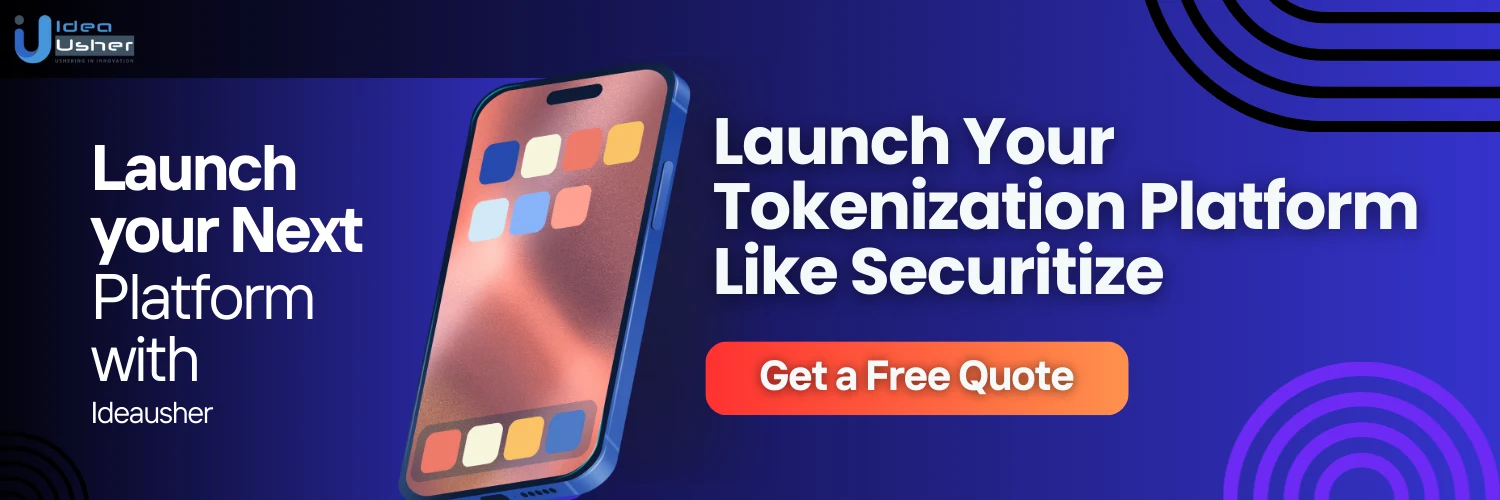
What is the Securitize App?
The Securitize is a fractional tokenization platform that makes it easier for investors to access and manage private market opportunities through digital securities. It enables the tokenization of real-world assets, including private equity, real estate, venture funds, and other alternative investments, while maintaining strict regulatory compliance. By combining blockchain infrastructure with regulated investment workflows, the app gives users a more secure, transparent, and efficient way to participate in private markets.
Investment Management
The app provides investors with secure access to their private market holdings, along with real-time analytics and customizable dashboards. This makes it simple to monitor performance, track allocations, and navigate investments without friction.
Tokenization and Trading
Securitize supports the full lifecycle of digital securities, from issuance to ongoing management and trading. Users can buy, sell, or hold tokenized assets that represent fractional ownership, improving accessibility to markets that were traditionally difficult to enter.
Compliance and Security
Built-in KYC and AML verification, combined with SEC-registered transfer agency services, ensure every transaction meets regulatory standards. The platform also applies strong security practices to keep investor data and assets protected.
Multichain Capability
The app supports multiple blockchain networks, including Ethereum, Polygon, and Solana. This gives issuers and investors flexibility in how they operate and allows assets to move across different chains when supported.
Secondary Market and Liquidity
Through integrated secondary trading options, investors can access liquidity for assets that normally require long holding periods. The app connects to approved exchanges and ecosystem partners to enable compliant transfers.
Investor Dashboard and Alerts
Users receive clear performance insights, downloadable reports, and customizable alerts to stay informed about portfolio changes, payouts, and new opportunities.
Access to Curated Offerings
The platform showcases private market offerings from established asset managers. Investors can participate with lower minimums and shorter lockup periods compared to traditional private equity, making high-quality opportunities more accessible.
How Does the Securitize App Work?
The Securitize app works by verifying users through a strict compliance workflow and linking their approved profiles to permissioned wallets that interact with regulated smart contracts. Once verified, users can review asset offerings and their investments are converted into compliant security tokens that reflect real ownership on the blockchain.
After that, users may trade eligible tokens on a regulated secondary market where settlement happens automatically through smart contract logic.
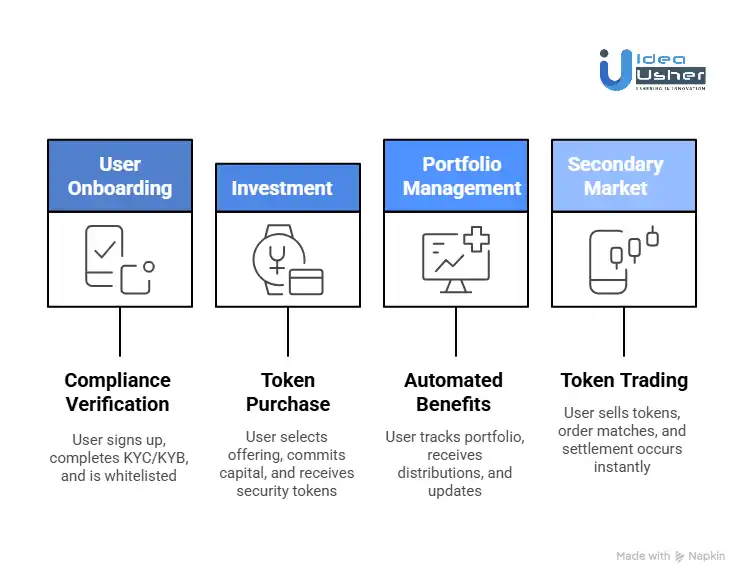
Step 1: The Compliant Onboarding
Before an investor can access offerings, the app confirms identity and eligibility.
Action: The user signs up, completes KYC/KYB verification, and goes through accreditation checks directly in the app.
Behind the Scenes: Securitize connects with third-party compliance providers such as Veriff or Sumsub to validate documents, confirm accreditation status, and securely store this data off-chain.
The user’s wallet address is added to an on-chain whitelist. This whitelist acts as a digital passport that smart contracts use to decide who is approved to buy, hold, or trade tokenized assets.
Step 2: The Investment
Once verified, the investor can participate in curated offerings.
Action: The user selects an investment and commits capital through ACH, wire transfer, or in some cases, stablecoins.
Behind the Scenes: The funds move to a regulated custodian or directly into the issuing entity’s account. After settlement, the smart contract mints the appropriate number of security tokens and distributes them to the investor’s whitelisted wallet.
The investor now legally owns a fractional share of the underlying asset, represented by a digital security token. Ownership is recorded transparently on the blockchain.
Step 3: Portfolio Management and Automated Benefits
Once tokens are in the user’s portfolio, automated administration handles ongoing tasks.
Action: The investor can view their portfolio, track performance, and receive updates or distributions directly through the app.
Behind the Scenes: Smart contracts calculate distributions and send earnings, such as dividends or rental income, to each verified owner. The system also delivers reports, tax documents, and updates through the app’s dashboard.
Investors receive a smooth, “set-and-forget” experience without the paperwork and delays normally found in private market investing.
Step 4: The Secondary Market
The app also offers regulated secondary trading for eligible assets.
Action: The investor decides to sell their tokens and places a sell order inside the app’s secondary market.
Behind the Scenes: The order is listed on Securitize’s regulated ATS, where it can be matched with another verified buyer. Settlement occurs through a smart contract that exchanges tokens and funds in a single atomic transaction.
The trade settles instantly, the seller receives their proceeds, and the new owner is recorded on-chain. Liquidity becomes available in a fully compliant, tightly controlled environment.
What is the Business Model of the Securitize App?
Securitize operates as a fully regulated tokenization platform that brings private market investing into the digital era. Its app and web platform allow companies to issue tokenized securities and manage the entire lifecycle of real-world asset investments on blockchain. By serving issuers, investors, and secondary market participants in one ecosystem, Securitize streamlines everything from onboarding and compliance to trading and record-keeping.
Securitize earns revenue through several integrated service lines that support the full journey of a digital security:
- Platform Fees for Tokenization: Issuers pay setup and ongoing platform fees to tokenize private equity, funds, real estate, or alternative assets and manage them through Securitize’s dashboard.
- Transaction Fees: The company charges fees for activities such as primary issuance, secondary trading, and transfers of digital securities.
- Transfer Agent Services: As an SEC-registered transfer agent, Securitize handles shareholder records and compliance functions for tokenized securities, generating steady service revenue.
- Licensing of Digital Securities Protocols: Its proprietary tokenization and compliance technology can be licensed by partners who want to build on the Securitize infrastructure.
- Investor Verification Services: Through Securitize ID, the company offers KYC, AML, and accreditation verification for issuers, earning additional compliance-service income.
These combined streams allow Securitize to support everything from issuance and investor onboarding to compliance monitoring and secondary market liquidity.
Financial Performance and Market Position
Securitize is widely recognized as one of the most established players in the digital securities space. The platform has verified more than 300,000 investors and helped over 150 companies raise capital through tokenized offerings. One standout example is Exodus, which raised $75 million in a Regulation A offering using Securitize’s infrastructure.
Its leadership position comes from pairing blockchain efficiency with strict regulatory oversight, positioning the company as a trusted bridge between traditional financial markets and tokenized assets.
Funding Rounds and Strategic Investors
Securitize has raised roughly $100 million across several major funding rounds, backed by some of the largest names in finance and crypto.
Key milestones include:
- $12.8 million Series A (2020)
- $48 million Series B (2021) led by Morgan Stanley Tactical Value and Blockchain Capital
- $47 million strategic round (2024) led by BlackRock and joined by Hamilton Lane, ParaFi Capital, Tradeweb, Aptos Labs, Circle, and Paxos
The 2024 round was especially significant because BlackRock selected Securitize as the transfer agent for its first tokenized public-blockchain fund, reinforcing Securitize’s standing as a trusted institutional partner.
Positioning and Future Outlook
Securitize differentiates itself by combining regulatory licenses, compliance tooling, issuance capabilities, and a regulated trading environment in one platform. This unified model makes it one of the few players capable of supporting the entire digital-security lifecycle.
The company is actively expanding globally and continues to invest in technology that makes tokenized assets easier to issue, manage, and trade. With growing institutional interest and increasing demand for digitized private markets, Securitize is well-positioned to remain a key force in the next generation of financial infrastructure.

Other Business Models for a Fractional Tokenization Platform
While integrated models like Securitize’s are powerful, they require significant regulatory licensing and capital. They require broker-dealer registration, transfer-agent licensing, an ATS, and a thick compliance stack, all of which take years and millions in regulatory overhead.
For entrepreneurs entering the tokenization space today, several equally viable and profitable business models focus on specific layers of the RWA value chain. These models are leaner, require far less regulatory exposure, and can scale globally faster.
Here are some proven business models, each tied to a real-world example and supported with practical revenue math.
1. The Asset-Specific Marketplace
The company sources or partners for real assets, tokenizes them, and sells fractional interests directly to retail or accredited investors. All activities, including browsing assets, purchasing tokens, trading, and receiving distributions, take place in one unified platform.
| Fee Type | Description | Typical Range |
| Asset Management Fees | Ongoing management or servicing fees on underlying assets | 1% to 2% annually |
| Primary Issuance Fees | Fees charged during the initial token sale | 3% to 7% of capital raised |
| Secondary Trading Fees | Fees applied to each trade on the internal marketplace | 0.25% to 1% per trade |
| Maintenance / Servicing Fees | Annual or quarterly fees for custody, reporting, or distributions | Varies (usually small flat fees) |
Example: RealT
RealT tokenizes U.S. rental properties. The numbers illustrate the model well:
- $30 million in tokenized real estate
- 1% management fee yields $300,000 or more per year
- A 5% issuance fee produces approximately $1.5 million upfront
- Ongoing trading volume generates consistent micro-fee revenue
This model monetizes acquisition, issuance, trading, and income distribution, which makes it powerful and predictable.
2. The Specialized Protocol and API Layer
Instead of building a full marketplace, you create a focused, developer-friendly service that powers identity, compliance, or data for other tokenization products. You become the essential infrastructure that operates quietly behind the scenes.
| Revenue Stream | Description | Typical Range |
| Usage-Based API Billing | Fees for KYC checks, accreditation verification, AML screening, wallet whitelisting, and similar services | $5 to $25 per API call |
| Tiered SaaS Plans | Monthly or annual subscription plans for high-volume or enterprise clients | Varies based on usage tier |
| Compliance-Layer Revenue Sharing | A small share of trading fees generated when transactions rely on the compliance engine | Percentages vary by partner agreement |
Example: Securitize ID
Securitize ID, although internal to Securitize, demonstrates the model clearly.
- If a similar specialized provider handled 100,000 investor verifications per year at $15 per check, it would generate approximately $1.5 million annually.
- A focused compliance API can serve the entire market, not just one platform, which creates significant scalability.
3. The Liquidity-Focused Exchange or ATS
The company obtains an ATS license or partners with a licensed operator. It builds a modern matching engine designed for digital securities and positions itself as the preferred venue for issuers who need liquidity and price discovery.
| Revenue Stream | Description | Typical Range |
| Trading Fees (Maker/Taker) | Blended fees charged on each executed trade | 0.05% to 0.15% per trade |
| Listing Fees | Fees charged to issuers for listing their tokenized assets | Varies by listing package |
| Market Data and API Sales | Sale of real-time trading data and automated execution API access to institutions | Pricing varies by data/API tier |
Example: tZERO
tZERO executed approximately $20 million in trading volume in a recent quarter.
A blended fee of 0.15% yields roughly $30,000 for that quarter. Although the volume is still modest, the upside is substantial once tokenized securities reach a significant scale. Trading venues benefit heavily from network effects because more issuers attract more traders, which attracts even more issuers.
How to Build a Fractional Tokenization Platform Like Securitize?
Building a platform like Securitize begins with a strong regulatory foundation supported by a compliant identity and wallet layer that verifies every investor. The next step is developing a tokenization framework that embeds legal rules into smart contracts and automates core fund operations.
We have delivered numerous fractional tokenization platforms like Securitize over the years, and this is the proven process our team follows to build them successfully.
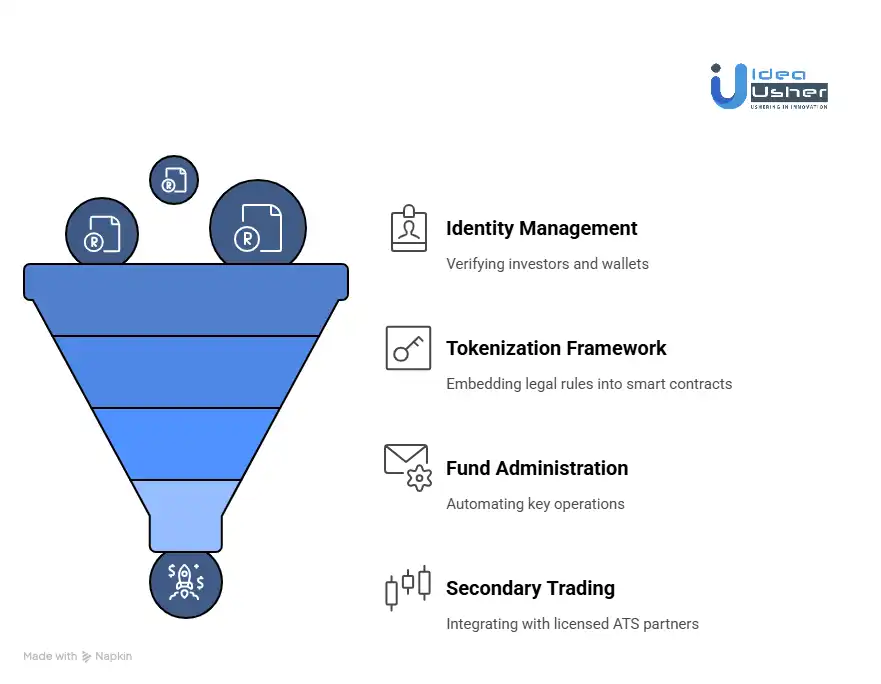
1. Regulatory & Compliance Infrastructure
We start by mapping the client’s target jurisdictions and identifying all regulatory requirements. Based on the asset type and region, we set up the right fund structure, such as an SPV or trust. We also handle integrations with licensed RTA, ATS, or Broker-Dealer partners so clients can launch without waiting for their own licenses.
2. Identity Management + Wallet Compliance
We create a streamlined onboarding flow that includes KYC, AML, and automated accreditation checks. Our team implements permissioned wallets and a whitelist system that ensures only verified investors can transact, helping the platform stay compliant across all markets.
3. Tokenization Framework
We select a compliant token standard, usually ERC-3643 or ERC-1404, and embed essential legal rules directly into the smart contracts. We also include governance and emergency controls that allow issuers to pause transfers or manage exceptions while keeping the system secure.
4. Digital Fund Administration Automation
We automate key operations such as dividends, interest payouts, redemptions, and vesting events. The platform includes real-time cap table tracking and a reporting dashboard that simplifies audits and compliance reviews for issuers.
5. Regulated Secondary Trading System
To support compliant secondary trading, we integrate the platform with licensed ATS partners. We design the settlement and compliance layers so every transfer is automatically checked and approved based on jurisdiction and investor status.
6. Launch, Scale, and Monetize
We help clients launch with a clear revenue model that includes issuer subscriptions, transaction fees, token issuance fees, and optional white-label marketplaces. We then support enterprise onboarding and asset partnerships to scale the platform’s growth.
$140T Tokenization Gap Fueling the Growth of Tokenization Platforms
The tokenisation gap matters because it shows how early we still are and why platforms could grow rapidly. Institutions want smarter settlement and automated compliance, younger investors expect digital access, and trillions in illiquid assets may soon demand fractional liquidity. Even with USD 10 billion in tokenised bonds issued over the last decade, it is still tiny next to the USD 140 trillion outstanding globally and this gap will likely fuel the next wave of adoption.
1. The Illiquidity Discount
Most of the world’s wealth sits in illiquid assets such as private equity, venture funds, real estate, infrastructure, collectibles, and art. These markets are slow, costly to transact in, and traditionally limited to a small group of investors. As a result, assets often carry an illiquidity discount because they are difficult to buy and sell.
Fractional tokenization reshapes this dynamic. Turning a $50 million property into 50 million digital tokens instantly expands the investor base. Trading opportunities increase, capital circulates more efficiently, and owners gain access to liquidity without selling the entire asset.
Growth Driver:
The massive volume of illiquid holdings seeking faster exits and broader distribution is creating strong demand for capable tokenization platforms. Asset owners have already shifted from asking whether they should tokenize to deciding which platform can execute securely and efficiently.
2. Institutional Pressure to Modernize Finance
Large financial institutions operate on complex and outdated infrastructure. Manual documentation, T+2 settlement cycles, reconciliation delays, and fragmented data systems create enormous operational drag.
Tokenization platforms offer a clean break from these limitations. Smart contracts automate compliance processes, handle corporate actions, streamline settlement, and create audit-ready transparency by default. Tasks that once required teams of people over several weeks can now be completed in minutes.
Growth Driver:
The push for operational efficiency is motivating banks, asset managers, and custodians to adopt tokenization strategies. This is no longer experimental innovation; it is a central modernization priority. Platforms able to deliver institutional-grade performance, regulatory readiness, and seamless integration with existing financial systems are becoming highly sought after.
3. A New Investor Class Demanding Digital First Assets
Younger investors who are used to real-time digital services have little patience for the slow and opaque nature of traditional private markets. They expect investing to be as smooth as using any modern financial app.
Tokenization platforms meet this expectation. They offer fractional access, intuitive dashboards, around-the-clock availability, and transparent user experiences. For this generation, digital ownership is not novel; it is standard.
Growth Driver:
As trillions of dollars in wealth transfer to younger investors, their expectations will reshape how capital flows into private markets. Platforms that combine regulatory compliance with a clean and accessible interface are positioned to capture a massive wave of new investment.
Key Challenges to Develop a Fractional Tokenization Platform
The blueprint for a fractional tokenization platform is exciting, but the execution is filled with regulatory and operational hurdles. Even well-funded teams struggle with these issues. At Idea Usher, after building platforms for many clients, we see the same challenges repeat. Below is a clear overview of the most common pitfalls and how we help teams overcome them.
1. Licensing Complexity
A tokenization platform is not a simple app. At scale, it becomes a regulated financial environment. You may need Broker-Dealer registration, Transfer Agent licensing, ATS approval, or equivalent permissions. All of these require audits, capital requirements, and long review timelines.
Our Solution: A Phased Compliance Path
Instead of trying to secure every license at once, we guide clients through a staged approach.
- Leverage Partner Ecosystems: Use licensed third-party partners for ATS trading, custody, and transfer agency services. This helps you launch and generate revenue while avoiding multi-year licensing delays.
- Jurisdictional Staging: Start in one friendly jurisdiction such as Switzerland, Singapore, or a compliant U.S. state. Validate your model there before expanding into regions with stricter regulations.
- Engage Regulatory Councils Early: Work with legal advisors, regulatory sandboxes, and industry bodies. Early clarity helps prevent redesigns and compliance missteps later.
2. Self-Custody vs. Platform Custody
You must decide how users will hold their assets. Self-custody appeals to crypto-native users but raises security and regulatory concerns. Platform custody feels safer for institutions but introduces centralization risks and compliance overhead.
Our Solution: A Hybrid, Institution-First Model
- Start With Institutional Custody: Partner with regulated, insured custodians such as Fireblocks or BitGo. Institutions and high-net-worth investors expect this level of protection.
- Design for Future Flexibility: Build a custody-agnostic architecture. This allows you to add self-custody options later, including smart contract wallets or MPC wallets with social recovery. You can do this without rebuilding your platform.
This approach satisfies institutional requirements today and keeps the door open for decentralization in the future.
3. Cross-Jurisdiction Compliance
A token that is legal for an accredited investor in the United States may be restricted entirely in the European Union or Asia. Compliance must adapt to the user, the jurisdiction, the asset, and the transfer rules. Static smart contracts cannot handle this complexity.
Our Solution: The Compliance Oracle
We use a two-layer system to manage these rules.
- On-Chain Enforcement With ERC-3643: Hard-code universal rules such as identity verification, blacklist checks, and basic transfer restrictions directly into the token.
- Off-Chain Dynamic Compliance Oracle: A secure rule engine evaluates each transfer request according to jurisdiction, investor type, accreditation status, and exemption logic. The oracle signs a permission that the smart contract checks before approving the transfer.
This design combines the immutability of on-chain rules with the flexibility needed to follow evolving laws.
4. The Liquidity Paradox
Tokenization suggests instant liquidity, but private securities remain tightly regulated. Investors want fast trading. Regulators require controlled, permissioned markets. Platforms must deliver liquidity without misrepresenting what is legally possible.
Our Solution: Controlled Liquidity With Clear Expectations
- Set Honest Expectations: Tokenization improves liquidity but does not create public-market speed. Private asset trading is still regulated, permissioned, and carefully monitored.
- Integrate With ATS Partners Early: Build your system to connect with regulated secondary marketplaces such as Texture Capital, INX, or Oasis Pro. This provides a compliant path to trading from day one.
- Highlight Issuer Benefits First: Tokenization speeds up capital raising, expands access to accredited investors, and automates cap table management. Secondary liquidity is valuable, but it works best when framed as a future advantage rather than the primary selling point.

Tools & APIs for a Fractional Tokenization Platform
Building a fractional tokenization platform is closer to designing regulated financial infrastructure than launching a simple crypto app. Every choice you make, including blockchain, token standard, custody, and KYC, has real consequences for compliance and scalability. Below is a practical breakdown of the core layers and the tools you should be evaluating at each step.
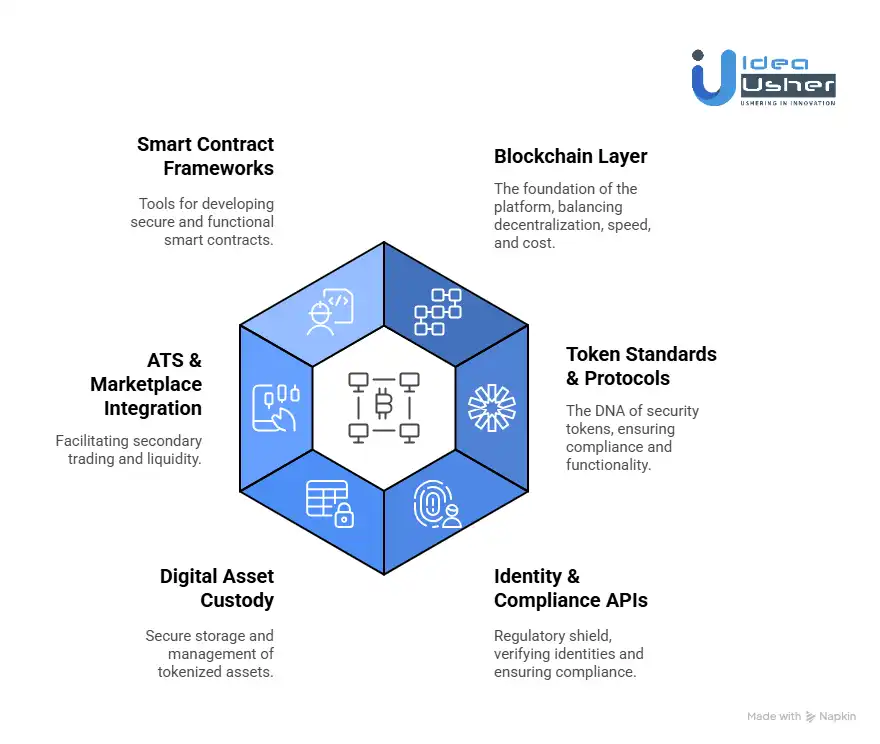
1. The Foundation: Blockchain Layer
This is the immutable ledger where your tokenized assets will live and transact. The choice here balances decentralization, speed, and cost.
Ethereum
The incumbent leader for security tokens. Its robust security and massive network effects make it a trusted choice, though gas fees can be a consideration. Ideal for high-value assets where maximum security is paramount.
Polygon
An Ethereum Layer-2 scaling solution. Offers significantly lower transaction fees and faster speeds while leveraging Ethereum’s security. Perfect for platforms targeting a high volume of smaller fractional investments.
Avalanche
Known for its high throughput and custom subnet capabilities, allowing you to create a tailored blockchain environment for your specific regulatory and operational needs.
Hyperledger FireFly
An open-source framework for building enterprise blockchain applications. It’s permissioned by design, making it a strong candidate for consortia or private markets where all participants are known and vetted.
2. Token Standards & Protocols
This is the DNA of your security token. Using the wrong standard is the single biggest technical mistake you can make.
- ERC-3643: The de facto open-source standard for permissioned tokens. It provides a built-in framework for on-chain identity verification and transfer restrictions, making it natively compliant. This is our go-to for most enterprise-grade implementations.
- ERC-1404: A simpler standard for transfer restrictions, allowing you to “lock” a token until certain conditions are met. It’s less feature-rich than ERC-3643 but can be a good starting point.
- T-REX Protocol: A suite of smart contracts that provides a comprehensive, out-of-the-box solution for token lifecycle management, including compliance, dividends, and voting. It can accelerate development but may come with less flexibility.
3. Identity & Compliance APIs
You cannot onboard real-world assets and investors without ironclad KYC/AML and identity verification. This is your platform’s regulatory shield.
- Sumsub, Persona, Veriff: These services handle the digital identity verification, document checks, and liveness detection to ensure your investors are who they claim to be.
- Chainalysis: The industry standard for blockchain analytics. It screens wallet addresses for illicit activity and ensures you are not transacting with sanctioned entities, a critical requirement for any regulated financial service.
4. Digital Asset Custody
Institutions will always ask where the tokens are actually held, and this is where real custody matters. Fireblocks, Coinbase Custody and BitGo provide regulated infrastructure that uses MPC technology and insured key management, so your platform can operate with serious security. If you want institutional trust, you will almost certainly need to work with one of them.
5. ATS & Marketplace Integration
Tokenization’s promise is liquidity. An Alternative Trading System (ATS) is the regulated venue that makes secondary trading possible.
Texture Capital, INX
These are licensed ATS operators that provide the legal and technological infrastructure for secondary trading. Your platform can integrate with their systems to offer seamless, compliant trading to your users.
Custom Marketplace Stack
For the ultimate control (and requiring significant regulatory licensing), you can build your own ATS functionality, similar to Securitize’s model. This is a complex, long-term play but offers the highest degree of integration.
6. Smart Contract Frameworks
This is the toolkit your developers will use to write, test, and deploy the secure code that powers everything.
- Solidity: The primary programming language for Ethereum and EVM-compatible blockchains (like Polygon and Avalanche).
- Hardhat / Truffle: Development environments for compiling, testing, and debugging smart contracts. Hardhat is the modern favorite for its robust testing capabilities and plugin ecosystem.
- OpenZeppelin Contracts: A library of vetted, secure, and community-audited smart contract components. Their “Contracts Security Token” library is an excellent starting point for building compliant tokens, saving hundreds of development hours and mitigating risk.
Conclusion
Fractional tokenization platforms like Securitize are reshaping the way assets are owned and traded because they merge blockchain engineering with legal and financial precision in a way that traditional app development simply cannot match. When you design a platform with the right architecture and a clear regulatory path, you can unlock new revenue streams and give investors a smoother way to access complex assets. At Idea Usher, we help enterprises build these systems from the ground up, and we guide them through regulatory integration, smart contract design, identity workflows, and ATS-ready liquidity features so they can move forward with confidence and deploy a platform that actually scales.
Looking to Develop a Fractional Tokenization Platform Like Securitize?
Idea Usher can help you build a fractional tokenization platform like Securitize by engineering smart contracts that enforce compliance at the protocol level and by creating reliable integrations with traditional financial systems. We also design infrastructure that may support secondary market liquidity from day one, and we do it with a focus on security and long-term scalability.
Our team of ex-MAANG/FAANG developers has collectively delivered over 500,000 hours of coding solutions, tackling the world’s most complex tech challenges. Now, we’re applying that depth of experience to the tokenization frontier.
We focus on what makes platforms like Securitize stand out:
- The Compliance Moat: Hard-coding regulatory checks into smart contracts.
- The Institutional Bridge: Designing for seamless TradFi integration.
- Liquidity from Day One: Planning for secondary markets from the ground up.
Your vision, our execution. Let’s build.
Work with Ex-MAANG developers to build next-gen apps schedule your consultation now
FAQs
A1: Building a platform of this level usually takes six to fourteen months because you need time for regulatory preparation and technical execution, and you must also run security checks that ensure the system behaves reliably at scale.
A2: You do not always need these licenses on day one because many platforms start with a limited feature set and work with regulated partners until they secure their own approvals, which lets them go to market faster while still staying compliant.
A3: Most teams choose ERC 3643 or ERC 1404 because these standards include built-in controls that manage investor permissions and enforce transfer rules, which help the platform maintain compliance through the full asset lifecycle.
A4: A single platform can handle many asset classes when it uses a modular architecture that maps each asset to a specific legal wrapper so you can expand into real estate funds royalties private equity or carbon credits without redesigning the entire system.
